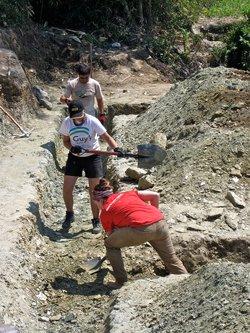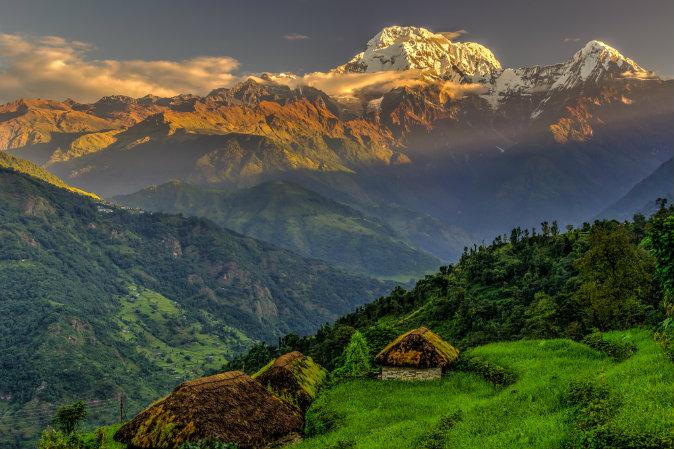Original article on www.gonomad.com
Our group, the Pokhara 31 we call ourselves, start off piled into two rickety buses bouncing around the dusty roads of Nepal climbing higher into the hills for the small village of Dhikurpokhari.
We have gathered together from different parts of the world, bankers, filmmakers and fashionistas, men and women in their 20’s, 30’s, up into their 60’s, for what would be a week of strenuous labor. None of us have any business lifting shovels or pickaxes, but 31 of us are here to build the first school in memory of our friend Guy Joseph, an adventurous traveler who died tragically in a paragliding accident in October 2011.
Journey to the Village
We are in high spirits, the bus buzzing with excited conversation in our matching white Guy’s Trust t-shirts, anticipating what kind of work might lie ahead of us. I presume I'll be flipping a switch on and off, on and off for a concrete mixing machine or something equally undemanding. This is to be the very first ground breaking and laying the foundations for one of three Guy Joseph Early Childhood Development Centres (ECDC).
During the one-hour ride, we ‘ooh…’ and ‘aah…’ out the windows over the snow-capped Himalaya range. We tie on our steel-capped boots as we get nearer. First a sign greets us, painted in impressive handwriting, ‘Welcome to the friends and family of Guy Joseph. Thank you for your support of the people of Dhikurpokhari.’ I’m touched and I prepare myself for the wave of emotion that will befall upon meeting the villagers.
First Encounters


